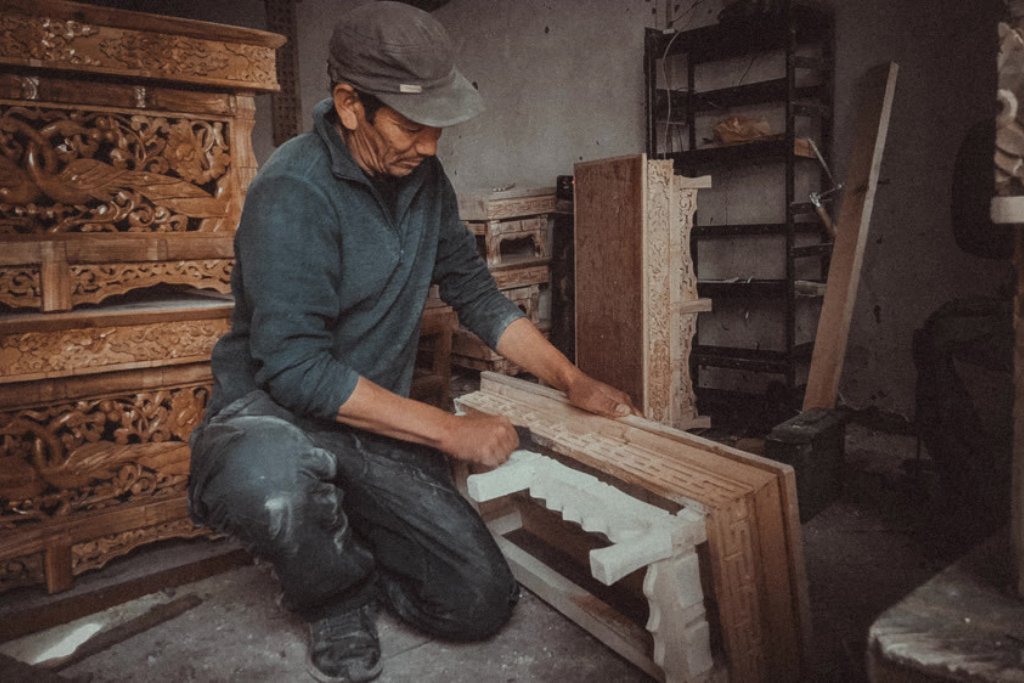
There’s art in Ladakh’s choktse, the multi-purpose low table
Each motif in the ornately carved wooden choktse of Ladakh, an everyday object in every household, reflects the facets of life. Despite challenges and the intense work involved, artisans persevere to preserve Ladakh’s distinct cultural heritage.
Ladakh leaves one spellbound. Not just by its distinct terrain but also by the markers of culture and heritage that grace every corner, from thangka paintings that adorn monasteries, and intricately carved prayer wheels on every turn of the street to the local architectural forms. One such aspect is the woodwork, standing out as an example of fine craftsmanship. No window, door or table in Ladakh is mundane; there is unique art in every piece of woodwork. Choktse of Ladakh is one such piece of furniture that is an art in itself.
Choktse is an oblong, low-height table, measuring 3 ft x 1.5 ft. Carved by skilled craftsmen, the tables come in two sizes. The taller ones were originally used by Lamas for conducting rituals and the lower ones for the purpose of having meals. With time, these tables have acquired multiple functions and come in myriad colours and designs. Every choktse tells a story and we went out looking for some of them.
Also Read: Ladakh mother carves Tibetan legacy on stone
We met Tsering Dawa, 42, in his workshop in Shey – the old capital of Leh. It’s a prominent node in the cultural ecosystem of Ladakh and noted for the Shey Palace – the erstwhile royal residence. Dawa is a craftsperson with 12 years of experience in wood carving.
Also Read: Dwindling snowfall leading to water crisis in Ladakh
Surrounded by the chokstes he is making – each carved with a different motif – Dawa says that every carving has a distinct meaning. From the lions and the garuda to the dragons, the motifs reflect the facets of Ladakh’s history. Dawa told us that every aspect of Ladakh’s choktse is deeply ingrained within the local context, from the wood used to the symbolism. The chokstes are made of wood from the Ladakhi willow – locally known as malchang, apricot and walnut trees. The design process requires complex stencils.
Also Read: Ladakh’s age-old chuspon water-use system gives hope
Once the design is in place, straight and curved tools are used for the carving process. The table can be polished or coated with colour. The process of crafting a choktse requires tremendous skill, patience and effort. Often inscriptions such as Tibetan scriptures, mantras, prayers and religious texts are carved and then the table is hand-painted with natural pigments, like this traditionally painted choktse. The carving and embossing can take weeks to months, depending on the complexity of the designs.
Also Read: Phuktal Gompa – Feeling on top of the world at this Ladakh monastery
Jamyang Namgyal, 23, who has been engaged in this craft for four years now told us that finding high-quality apricot and walnut wood is difficult because of limited supply and environmental concerns. The harsh weather conditions affect how the wood dries, impacting the overall quality and durability.
Tourism has brought jobs with better wages, resulting in very few young people learning traditional woodworking skills. From Tsering Dawa and Jamyang Namgyal’s stories, we learned how arduous and painstaking the process is to create a single choktse.
Also Read: Melting point! Ice hockey rinks need cooling fans in Ladakh
The choktses are found in many Himalayan homes, and in every Ladakhi living room. The motifs etched on them are representative of Ladakh’s rich history.
Also Read: Here’s all that happened at Ladakh Nomadic Festival
The lead image shows Tsering Dawa in his workshop, surrounded by multiple choktses, each with a distinct pattern of its own. Dawa has not just been carving tables but has also been advocating for the preservation of the craft in the community.
Article syndicated via Charkha Features. Reporting by Uzma Shamim who leads Charkha’s work in Leh. Photography by Nazir Ahmed who is pursuing his graduation in EJM College, Leh. Inputs: Sohail Qhaysar and Tsewang Otzer.







